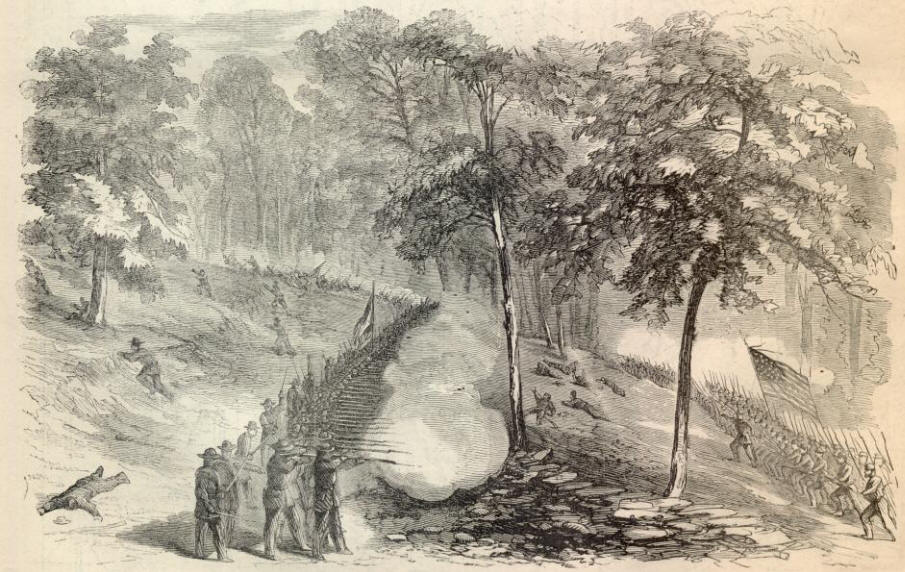Battle of South Mountain • Turner’s Gap • Fox’s Gap • Crampton’s Gap
On September 14, 1862, the badly outnumbered rear guard of Robert E. Lee’s Confederate Army of Northern Virginia fought to hold three passes through Maryland’s South Mountain against George McClellan’s Army of the Potomac.

Following his stunning victory at Second Bull Run, Lee invaded the North for the first time. Now his army was scattered around western Maryland. The main body was making for Pennsylvania, while a large detachment under “Stonewall” Jackson was in the process of surrounding the sizable Union garrison at Harpers Ferry.
Lee was not concerned at what would normally be considered a dangerous dispersion of his forces. The Union army had been badly beaten and was stunned and disorganized. It had been reassigned to McClellan, a slow and cautious commander that Lee knew and thoroughly understood. And South Mountain, which divided Maryland from north to south, provided a defensive wall that would allow a small rear guard to shelter Lee’s other operations.
But for all McClellan’s faults he was a superb organizer and motivator, and the Army of the Potomac was soon on the march. And he had been given the greatest gift a general could hope for: a copy of Lee’s dispositions and intentions, the infamous Lost Order. Armed with this knowledge, he moved faster than Lee expected. Desperate rear guard fighting resulted at the three passes over South Mountain: Crampton’s Gap, Turner’s Gap and Fox’s Gap.
In the end McClellan would not move fast enough. Jackson captured Harpers Ferry, and Lee had time – barely – to gather most of his army along the banks of Antietam Creek. The battle that would be fought there was the bloodiest single day in American history, and the fight on South Mountain became a little-known prelude, remembered by a handful of monuments in the now-quiet woods.
Click on any of the three gaps below (or on one of the submenus at the top of the page) to see the monuments, markers and other features at that location:
Turner’s Gap
Fox’s Gap
Crampton’s Gap

